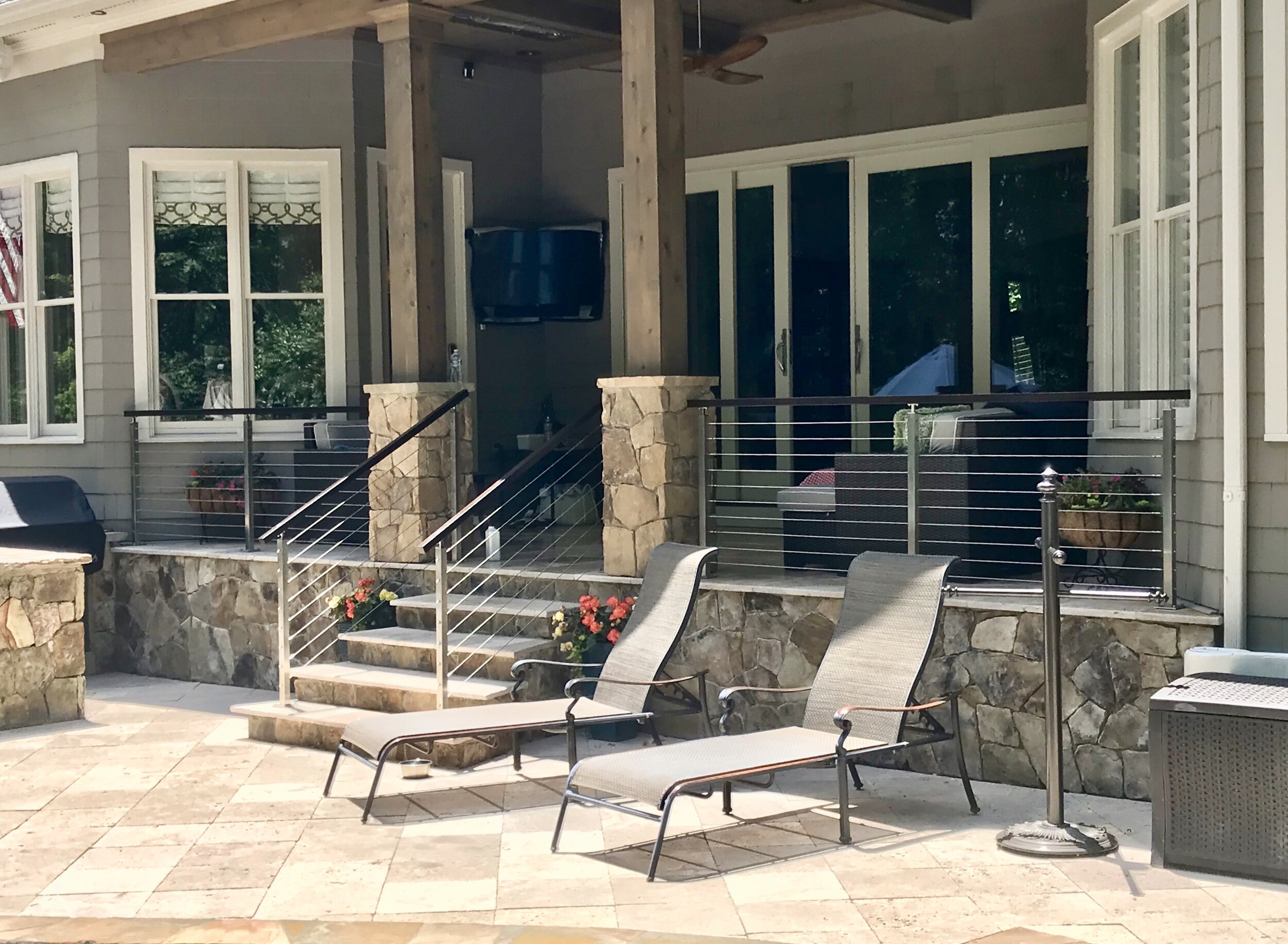Balcony Railings as Storytellers: Capturing the Narrative of Old World Craftsmanship
A walk through an old neighborhood isn’t just a stroll—it’s a glimpse into history, told through intricate balcony railings that have stood the test of time. These wrought-iron masterpieces, with their delicate swirls and bold patterns, aren’t just there for safety. They tell stories of artisans who poured their skill into every twist of metal, of families who leaned on them while sharing evening conversations, and of an era when craftsmanship wasn’t rushed.
Unlike today’s mass-produced railings, these old-world designs reflect character, tradition, and a level of artistry that’s becoming rare. Each balcony holds a narrative, a connection to the past that modern buildings often lack. Some whisper elegance, others speak of resilience, but all remind us of a time when beauty and function went hand in hand. Once you start noticing them, it’s hard to look away—you’ll find that these railings don’t just frame a view, they frame a story.
How do balcony railings reflect the cultural heritage of old-world craftsmanship?
Balcony railings are an essential feature of old-world craftsmanship, reflecting the cultural heritage of the time through their materials, designs, and intricate details. In many historical periods, balcony railings were more than just functional; they were artistic expressions of the culture's values, traditions, and aesthetic preferences.
For example, wrought iron railings with delicate floral motifs or geometric patterns showcased the skill of metalworkers in Europe. At the same time, hand-carved wooden balusters in colonial architecture reflected the woodworking traditions of early settlers. These railings told stories of craftsmanship passed down through generations, with every curve and joint embodying cultural significance.
Additionally, the balcony railings design often reflected the broader architectural style of the time, serving as a visual extension of a building's character. For instance, in Mediterranean and European architecture, railings were made to complement the building's exterior and symbolize social status and heritage.
Whether featuring grand, ornate scrollwork in palatial estates or simpler, rustic woodwork in countryside homes, the balcony railings were a testament to the local materials and techniques, grounding the structure within its cultural and historical context. They offer a glimpse into the past, capturing old-world cultures' craftsmanship, values, and artistry.
What materials are typically used in traditional balcony railings to showcase old-world artistry?
Traditional balcony railings often featured materials showcasing old-world artistry, combining functionality and aesthetic beauty. The materials used were chosen for their durability, workability, and ability to reflect the craftsmanship of the time. Here are some materials commonly used:
Wrought Iron: Wrought iron was popular in many European and Mediterranean regions. It was highly favored for its malleability, allowing artisans to create intricate designs such as scrolls, floral patterns, and geometric shapes. The blacksmithing process also gave wrought iron railings a unique texture and strength, making them durable while offering a graceful appearance.
Wood: Wood, particularly hardwoods like oak, teak, or mahogany, was used in colonial and traditional homes for more rustic or classic designs. Wood allowed artisans to carve and shape detailed patterns, from simple geometric lines to elaborate floral motifs. Its warmth and natural grain added an inviting touch to balcony railings.
Stone: In Mediterranean and Gothic architecture, the stone was sometimes used for balcony railings or supporting columns. Stone railings were often carved with intricate patterns, showcasing the sculptural skills of artisans. Stone's longevity and elegance added grandeur to monumental buildings.
Brass and Bronze: These metals were used for accents or decorative elements on railings. Brass and bronze could be polished to a high sheen, adding a luxurious, gleaming effect to the overall design.
Cast Iron: Similar to wrought iron, cast iron was used for its ability to mold into complex shapes. Cast iron railings were common in urban settings, particularly during the Victorian era, showcasing strength and intricate, decorative artistry.
These materials reflect the artisans' technical skills and the cultural and regional influences of the time, preserving the rich history of old-world craftsmanship in architectural design.
How have the designs of balcony railings evolved while maintaining a connection to historical craftsmanship?
The designs of balcony railings have evolved significantly over time, blending modern materials and techniques with the enduring traditions of historical craftsmanship. While contemporary balcony railings may feature sleek, minimalist designs or use new materials, they often maintain a connection to the intricate artistry of the past through the following ways:
Incorporating Traditional Motifs: Many modern balcony railings still feature classic design elements like scrollwork, geometric patterns, and floral motifs inspired by historical styles such as Baroque or Victorian. These motifs help preserve the aesthetic qualities of old-world craftsmanship while adapting them to new contexts.
Use of Modern Materials with Classic Styles: While materials like wrought iron and wood continue to be used, new options such as stainless steel, aluminum, and glass are now incorporated into designs. These materials allow for more durable and low-maintenance railings while maintaining traditional styles' elegant shapes and intricate detailing.
Artisanal Craftsmanship in Contemporary Designs: The craftsmanship associated with historical balcony railings is still evident in modern designs, as many artisans continue to create custom railings with hand-forged details, providing a sense of individuality and high-quality artistry.
Blending Old and New: Many modern balcony railings combine historical craftsmanship's ornate and decorative elements with contemporary functionality. For example, decorative patterns are integrated with more practical, contemporary designs like glass panels for a modern look that still respects traditional craftsmanship.
These design evolutions demonstrate a seamless blending of history with innovation, allowing balcony railings to remain functional while preserving their historical charm and artistic integrity.
In what ways can balcony railings tell the story of a region's architectural history?
Balcony railings are more than just functional elements of a building; they can tell the story of a region's architectural history through their design, materials, and craftsmanship. Here's how they reflect the cultural and architectural heritage of a region:
Design Influence from Historical Periods: The style and details of balcony railings often reflect the architectural movements that shaped a region. For example, Victorian-era railings often feature intricate ironwork and ornate patterns. In contrast, Mediterranean railings may showcase simpler, rustic designs with wrought iron or wood, reflecting the regional focus on natural materials and outdoor living.
Local Materials and Craftsmanship: The materials used in balcony railings often tell a story about the resources available in a particular area. Railings may feature detailed wrought iron or cast iron work in regions with abundant iron or metalworking traditions, like parts of Europe. In other areas, such as coastal regions, wood or stone may dominate, representing the local materials used by artisans.
Cultural Identity and Symbolism: Decorative elements on railings may carry cultural significance. For example, floral or geometric patterns could symbolize local traditions. At the same time, motifs specific to a region's history, such as shields or coats of arms, might be incorporated to tell a story of heritage, pride, or historical significance.
Adaptation to Environmental Factors: Balcony railing designs often respond to a region's climate and geography. Railings may be designed with drainage features or use materials that resist corrosion in areas prone to rain or high humidity. These functional elements also help tell how architecture evolved to suit local environmental challenges.
Through their designs and materials, balcony railings are powerful storytellers, encapsulating a region's rich architectural and cultural history.
Discover the Timeless Beauty of Old-World Balcony Railings!
Discover the timeless beauty of old-world balcony railings with Master Fabrication! Our expertly crafted railings blend classic artistry with modern durability, preserving the charm of traditional designs while ensuring long-lasting performance.
Whether restoring a historic building or adding character to a new one, our custom balcony railings tell the story of old-world craftsmanship with intricate designs, from ornate wrought iron to hand-carved wooden elements.
Let us help you bring history and elegance to your space. Contact Master Fabrication today to explore our beautiful, high-quality balcony railing options and enhance your property with timeless craftsmanship!

